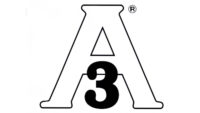
Introduction
The 3-A Symbol is far more than a corporate logo. It is a registered trademark intended for voluntary use by fabricators to signify that certain models/types of equipment have been verified by an independent inspection to conform to a 3-A Sanitary Standard. The Third Party Verification (TPV) inspection of equipment for conformance must be conducted at the manufacturing facility by a qualified authority accredited by 3-A SSI as a Certified Conformance Evaluator (CCE). Erickson was among the first group of CCEs accredited by 3-A SSI in 2003 and he continues to provide TPV inspection services to a number of fabricators.
Why 3-A Sanitary Standards matter
Giving a “post mortem” of equipment design and engineering failures has been done so many times that I’ve lost count. We really don’t find a large number of “show-stoppers” during the TPV inspection at facilities. For the most part, equipment manufacturing managers, designers, and engineers are conscientious about designing to 3-A Sanitary Standards.
We are there to evaluate and independently verify conformance to the standards. A review of the Engineering, Design, and Technical Construction File, or EDTCF, is the beginning of the review process. Occasionally there are differences when it comes to interpreting a specific requirement in a standard. When that happens, the CCE draws upon resources within 3-A SSI to resolve the issue.
We are now into our 19th year of completing TPV inspections. Non-conformities are found and here are some takeaways based on my experience and that of other certified conformance evaluators.
While an initial inspection might be considered a good time to orient new staff on the 3-A Symbol program, it is helpful to have experienced staff members on hand who have gone through this review. With some companies, it is common for managers, engineers and designers to be moved to other projects within their product offerings. This practice is certainly good for employee growth. However, it puts the CCE in the position of “trainer” under this type of employee rotation program. Additionally, dairy plants that don’t have the necessary documented information is a problem for the CCE.
Whenever we visit the manufacturing facility for the follow-up inspection required five years after the initial authorization, we usually find numerous changes and new personnel. Many times the responsibility for assuring ongoing conformance lands in the lap of the least senior management staff. This is not always the case but when this happens, managers need to understand the importance of keeping updated information and records in the EDTCF file. More importantly, how to quickly find the required information in the EDTCF is critical. A new employee or company contact who was not engaged in the previous equipment review may not be familiar with the expectation of the standards and the CCE.
Equipment manufacturers typically manage numerous types of certifications which are required for different industry sectors. For many of these companies manufacturing equipment for the dairy and food processing industries is a compatible and lucrative “sideline”. This is especially true for companies manufacturing various types of sensors and related fittings for applications such as aerospace, gas and oil, liquid transport, wastewater treatment, fresh water, compressed air, and high-pressure applications.
Diversity in standards
Standards may include: ASME Boiler and Pressure Vessel Code (BPVC), Electrically Powered Equipment (UL and CE), Department of Transportation (DOT), National Sanitation Foundation (NSF), Occupational Health and Safety Administration (OSHA), and in the case of some equipment such as metering and/or consumer packaging filler equipment, Federal and State Departments of Weights and Measures. An understanding of other certification systems can be beneficial to meeting the TPV inspection.
A quick word about ISO 9001/2015. CCEs are required to evaluate a fabricator’s QM, QA, or QC Program. While an ISO 9001-2015 certificate is not required, having a certified program is considered a plus and is recorded by some CCEs in the TPV inspection report.
The safety of multiple use food contact materials has gained extra attention with the implementation of the Food Safety Modernization Act in the U.S. 3-A Sanitary Standards rely heavily on 304 and 316 grades of stainless steel. These materials must be corrosion resistant and non-reactive in the environment of intended use. Manufacturers must maintain traceability records back to original invoice which includes a “heat number” and an alloy certificate.
Heavy metal content including lead, mercury, cadmium and chromium 6 must be below safe levels tolerances and declared on the alloy certificates. Other optional metal alloys are called out in the standards. It is important to ensure that optional alloys meet 3-A SSI standards criterion. A recent discussion was held with a sensor manufacturer that was using a very high grade of stainless steel which had copper listed on the alloy certificate. The copper content was less than 1% in this particular alloy. Copper (on its own) is not generally used in contact with milk products but in this case the copper aided in establishing a higher level of corrosion resistance. Finding a reference for this situation took some effort on the part of the manufacturer.
Nonmetals — defined as Rubber and Rubberlike Materials (3-A Sanitary Standard 18-20) and Plastics (3-A Sanitary Standard 20-27) — are integral materials in food processing equipment. Assuring the acceptance of these materials as “multiple use food contact surfaces” is one of the more difficult areas of conformance for fabricators. Consumer advocates and, in turn, governments continue to press the material manufacturing industry to more specific “Safe Levels and Tolerances” in regard to the chemistry used to make these materials successfully used for decades. The CCEs must verify that Title 21 of the U.S. Code of Federal Regulations for “Indirect Food Additive” legislation is followed and declared by the manufacturers of these articles.
The short list above is just a primer. The TPV inspection program has produced many benefits for fabricators, processors, and regulatory sanitarians with one common goal: to advance food safety through hygienic design. 3-A SSI offers many free resources on sanitary equipment design and evaluation including e-learning modules, papers, and meeting presentations in the Knowledge Center at www.3-a.org.



